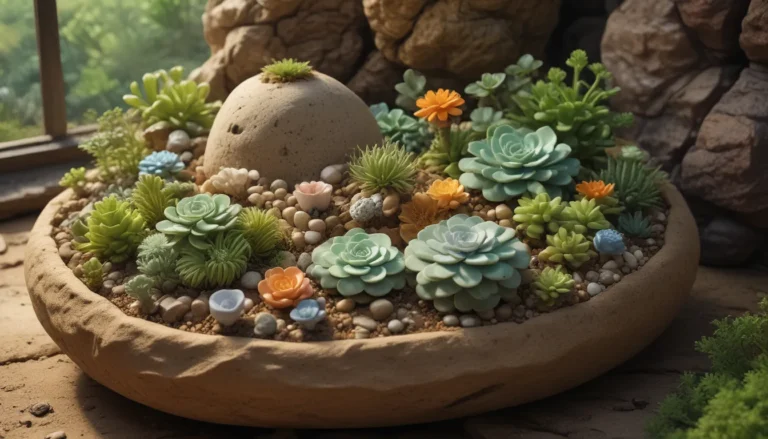A Deep Dive into Epiphytes: How to Grow and Care for these Unique Houseplants

When we think of houseplants, images of potted plants in soil likely come to mind. But what if we told you that there is a whole other category of houseplants that can grow without soil, on driftwood, shells, lava rocks, or even pieces of wood? These unique plants are known as epiphytes, and they have a fascinating relationship with their host plants in the wild, usually trees.
In this comprehensive guide, we will delve into the world of epiphytic plants, exploring what they are, how to grow them, and highlighting 15 exceptional varieties that thrive as houseplants. Whether you are a seasoned plant parent looking to expand your collection or just curious about these intriguing plants, this guide is for you.
Understanding Epiphytes
Epiphytes are plants that grow on other plants without drawing nourishment from them. Instead, they derive everything they need to survive – sun, air, water, and nutrients – on their own. This unique way of life allows them to thrive in different environments, from tropical rainforests to your living room.
There are a wide variety of epiphytes, including mosses, orchids, bromeliads, and ferns. These plants are usually dispersed by birds and mammals, with seeds landing on branches where moss or lichens have gathered. Over time, the seeds germinate, sending roots out to grasp onto the tree and establish a foothold.
Epiphytes can be classified into three main types based on their growth habits: holo-epiphytes that spend their whole lives in the air, hemi-epiphytes that send roots down as they age, and epizoic epiphytes that grow on other living organisms besides plants.
How to Grow Epiphytes
Growing epiphytes without soil requires a few key considerations. Here are some general guidelines to help you care for these unique plants:
- Choose a supportive base for the plant, such as bark, lava rock, or sphagnum moss.
- Select a suitable medium like sphagnum moss or coconut coir to hold moisture.
- Ensure the plant receives bright, indirect light and regular misting.
- Anchor the plant to the base using materials like jute, twine, or bonsai wire.
- Provide a warm, humid environment for optimal growth.
Each epiphyte species has specific requirements, so it’s essential to understand the needs of your chosen variety before diving in. Whether you opt for a staghorn fern mounted on wood or an orchid nestled in driftwood, these plants can add a touch of nature to your home.
15 Exceptional Epiphyte Varieties
Here are 15 outstanding epiphytic plants that shine as houseplants, ranging from popular favorites like Anthurium and Bird’s-Nest Fern to unique varieties like Dischidia and Orchid Cactus:
-
Anthurium: Known for their striking red spathes and glossy foliage, Anthuriums are epiphytic plants that thrive in bright, indirect light.
-
Begonia: Many Begonia species are epiphytes, requiring high humidity and frequent watering for optimal growth.
-
Bird’s-Nest Fern: With long, spoon-shaped leaves, Bird’s-Nest Ferns are ideal for humid environments and bright, indirect light.
-
Blue Star Fern: Featuring dusty blue-green foliage, Blue Star Ferns do well with regular misting and a moss base for moisture.
-
Bromeliad: Bold and colorful, Bromeliads are epiphytic plants that require an acidic substrate like peat moss or bark.
-
Dischidia: Petite and charming, Dischidia plants thrive in well-draining soil or moss, making them ideal for small spaces.
-
Epiphyllum: These cacti produce stunning flowers and require frequent watering, making them a lovely addition to any home.
-
Fern Leaf Cactus: With glossy green foliage, Fern Leaf Cacti are undemanding when it comes to water and light.
-
Fiddle-Leaf Fig: Often mistaken for terrestrial plants, Fiddle-Leaf Figs are hemi-epiphytes that require sturdy support as they grow.
-
Hoya: Diverse and easy to care for, Hoyas come in various sizes and colors, perfect for both hanging and upright growth.
-
Lipstick Plant: Loved for their vibrant flowers, Lipstick Plants thrive in moss-based environments with lots of water.
-
Monstera: Recognizable for their Swiss cheese-like leaves, Monsteras are hemi-epiphytes that make a bold statement in any space.
-
Orchid: Fragrant and exotic, Orchids are stunning additions to any home, thriving in well-draining soil or moss.
-
Orchid Cactus: With weeping foliage and vibrant blooms, Orchid Cacti are striking epiphytic plants that require minimal water.
-
Peperomia: Easy to care for and visually appealing, Peperomias are perfect for beginners, requiring moderate humidity and light.
These exceptional epiphytic plants offer a wide range of sizes, shapes, and colors, making them a versatile choice for any home. Whether you’re drawn to the glossy spathes of Anthurium or the weeping habit of Staghorn Ferns, there’s an epiphyte variety to suit every plant lover’s taste.
Conclusion
Epiphytes offer a unique and captivating way to bring the beauty of nature into your home. From vibrant flowering plants like Orchids and Bromeliads to elegant ferns like Bird’s-Nest Ferns and Staghorn Ferns, these plants add a touch of greenery to any space.
Whether you’re a seasoned plant parent looking to expand your collection or a beginner curious about epiphytic plants, this guide is a valuable resource for growing and caring for these extraordinary houseplants. With the right knowledge and a little creativity, you can transform your home into a lush, green oasis filled with the wonders of epiphytic plants.
So, consider adding a few epiphytic plants to your indoor garden and watch as these unique houseplants bring joy and beauty to your space. Happy growing!





